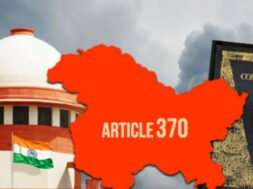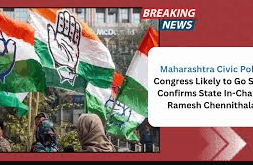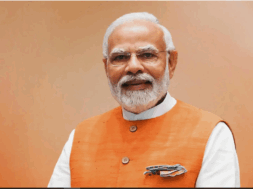
Demonetization: How it achieved its objectives—in J&K and UP!
Virendra Pandit
New Delhi: With the Supreme Court, armed with a 4-1 majority, upholding the Narendra Modi Government’s 2016 decision to demonetize high-value old currency notes of Rs. 500 and Rs.1000, the spotlight is back on whether this significant step could really achieve its unsaid objectives.
Critics, mostly merely politically motivated and unlettered in financial and security matters, have since claimed that demonetization did not have any discernible impact on currency in circulation (CIC) in the country, which has soared by almost 83 percent since its announcement on November 8, 2016.
According to sources, the most important reason for demonetization was to stop terror funding in Jammu and Kashmir where high-value currency notes—real and fake—were in circulation for years. In other states also, fake notes had almost created a parallel economy.
In J&K, terror outfits, including the Hurriyat, paid in high-value currency notes to the young unemployed youth for throwing stones at the security forces, bombings, and joining terror gangs. In other words, Pakistan-sponsored terror gangs, flush with Indian currency notes, had kept terrorism alive in the sensitive border state for over three decades.
The lightning strike on this funding suddenly dried up the resources of these terror groups. Its impact was seen in the gradual reduction of terror acts. It was against this backdrop that, as the next step, the Modi Government abolished Article 370 of the Constitution of India which gave a “special status” to Jammu and Kashmir, in August 2019, and divided it into two separate Union Territories—J&K and Ladakh.
Another key objective of demonetization was to contain the wanton use of black money in elections. Many sectarian political parties received funds in cash using high-value currency notes, which they misused to foment unrest. A sudden demonetization left them high and dry as they could no longer influence the outcome of elections. Uninfluenced polling gave an edge to the BJP in key states like Uttar Pradesh where it came and then returned to power in 2018 and 2022.
A third objective was to promote digital payments and curb black money flows. India, with almost 40 percent of the world’s digital payment transactions, is the global leader in this respect.
Now, with the Indian economy doing relatively well, despite the Covid-19 disruptions, the value of currency notes in circulation (CIC) was bound to increase.
According to the Reserve Bank data, the CIC in value terms soared from Rs 17.74 lakh crore on November 4, 2016, to Rs 32.42 lakh crore on December 23, 2022. Of course, soon after demonetization, the CIC fell precipitously to a low of about Rs 9 lakh crore on January 6, 2017, nearly 50 percent of Rs 17.74 lakh crore on November 4, 2016.
This was the lowest in the past six years following the scrapping of old bank notes that accounted for around 86 percent of the total notes at that time.
As remonetization gathered pace, the CIC moved up week after week and reached 74.3 percent of the peak by the end of the financial year. Subsequently, around 85 percent of its pre-demonetization peak was at the end of June 2017.
Demonetization led to a decline in the CIC by about Rs 8,99,700 crore (up to January 6, 2017) resulting in a large increase in surplus liquidity within the banking system, equivalent to a cut in the Cash Reserve Ratio (percentage of deposits parked with the RBI) by about 9 percent.
This posed a challenge to the RBI’s liquidity management operations and the central bank used instruments, especially reverse repo auctions under the liquidity adjustment facility (LAF) window to absorb surplus liquidity in the banking system.
The CIC rose to Rs 32.42 lakh crore at the end of December 23, 2022, as compared to Rs 31.33 lakh crore at the end of March 31, 2022.
Since demonetization, the CIC has seen an increase barring the year of demonetization. It contracted by 20.18 percent to Rs 13.10 lakh crore at the end of March 2016 from Rs 16.42 lakh crore at the end of March 31, 2015.
In the following year of demonetization, it jumped by 37.67 percent to Rs 18.03 lakh crore and surged 17.03 percent to Rs 21.10 lakh crore at the end of March 2019 and 14.69 percent to Rs 24.20 lakh crore at the end of 2020.
In the previous two years, the pace of CIC growth in value terms was 16.77 percent to Rs 28.26 lakh crore on March 31, 2021, and 9.86 percent to Rs 31.05 lakh crore at the end of March 31, 2022.
On Monday, asserting that the decision-making process was not flawed, the Supreme Court in a 4:1 majority verdict upheld the government’s 2016 decision to demonetize the Rs 1,000 and Rs 500 denomination notes.
There has to be great restraint in matters of economic policy and the court cannot supplant the wisdom of the executive by a judicial review of its decision, a five-judge Constitution bench of the apex court, headed by Justice S A Nazeer, said.
Justice B V Nagarathna dissented from the majority judgment only on the point of the Centre’s powers under section 26(2) of the RBI Act and said the scrapping of the Rs 500 and Rs 1,000 series notes had to be done through legislation and not through a notification.
“Parliament should have discussed the law on demonetization, the process should not have been done through a gazette notification. Parliament cannot be left aloof on an issue of such critical importance for the country,” Justice Nagarathna said.
She also said there was no independent application of mind by the RBI and only its opinion was sought, which cannot be said to be a recommendation.
The bench, also comprising justices B R Gavai, A S Bopanna, and V Ramasubramanian said the Centre’s decision-making process could not have been flawed as there was consultation between the RBI and the Union government.
The top court’s judgment came on a batch of 58 petitions challenging the demonetization exercise announced by the Centre on November 8, 2016.














